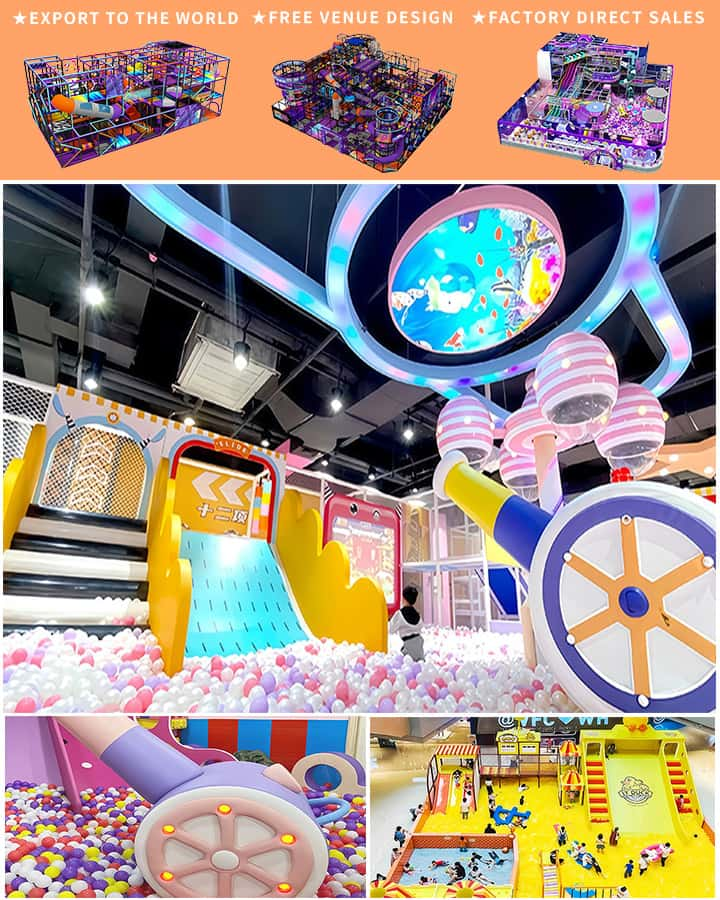Designing an outdoor playground for children is a task that requires a delicate balance of creativity, safety, and functionality. When envisioning and creating a space where kids can enjoy themselves while developing physical, social, and cognitive skills, it is essential to consider several key factors. This article will explore various aspects of designing an outdoor playground that caters to the needs of young users in a safe and engaging manner.
Understanding the Importance of Playgrounds
Outdoor playgrounds serve as essential spaces where children can engage in physical activities, interact with peers, and develop crucial motor skills. Playgrounds are also vital for fostering creativity and imagination, allowing children to explore different roles and scenarios through play. Well-designed playgrounds encourage healthy lifestyles by promoting physical activity from a young age.
Safety First: The Cornerstone of Playground Design
Safety is paramount in playground design. Ensuring that all equipment is age-appropriate and constructed from non-toxic materials is fundamental. Here are some safety considerations:
- Surface Material: Use impact-absorbing surfaces like rubber mats, wood mulch, or sand to cushion falls. Avoid concrete, asphalt, or any hard surfaces that can cause severe injuries.
- Equipment Design: Select equipment that is appropriate for the intended age group, with rounded edges and no sharp points or pinch points. Equipment should be stable and firmly anchored to prevent tipping over.
- Supervision: Design the layout in a way that allows adults to easily supervise all areas of the playground, reducing blind spots and increasing overall safety.
Incorporating Educational Elements
A well-rounded playground design integrates educational elements that promote learning through play. Consider including:

- Interactive Features: Install features like musical instruments, interactive panels, and sensory play areas that stimulate curiosity and creativity.
- STEM Activities: Incorporate elements that encourage scientific exploration, such as water tables, small slides with adjustable angles, and building blocks.
- Nature Integration: Use natural elements like plants, rocks, and water features to create a diverse and stimulating environment. Garden beds with native plants can teach children about local flora.
Accessibility: Inclusive Design for All Children
An inclusive playground ensures that children of all abilities can participate equally. Key features include:
- Wheelchair Accessibility: Ensure that pathways are wide and smooth, with ramps instead of stairs wherever possible.
- Adaptive Equipment: Include equipment that can be used by children with different physical abilities. For example, swings with bucket seats or transfer stations can accommodate children with mobility issues.
- Sensory Play Areas: Create zones specifically designed for children with sensory processing needs, using tactile and visually contrasting materials.
Engaging and Diverse Play Structures
To keep the playground exciting and challenging, incorporate a variety of play structures that cater to different interests and age groups. Some popular choices include:
- Climbing Structures: Climbing walls, ropes, and cargo nets provide excellent opportunities for physical development and confidence-building.
- Slides and Swings: Classic components that remain popular among children of all ages. Ensure there are multiple types of slides (straight, spiral, etc.) and both standard and adaptive swings.
- Play Houses: Small play structures that mimic real-life environments (like houses, castles, or ships) encourage imaginative play.
Sustainable Design Choices
Incorporating eco-friendly practices into playground design benefits both the environment and the community. Consider:
- Sustainable Materials: Choose recycled or sustainably sourced materials for construction. Bamboo, reclaimed wood, and recycled plastics are excellent options.
- Energy Efficiency: If the playground includes lighting or electronic features, opt for solar-powered solutions or low-energy designs.
- Water Conservation: Design irrigation systems efficiently and choose drought-resistant plants for landscaping to conserve water.
Community Involvement and Feedback
Involving the community in the design process can lead to more successful and well-loved playgrounds. Host public meetings, conduct surveys, and invite children and parents to share their ideas. This participatory approach ensures that the final design meets the needs and preferences of its primary users.
Conclusion
Designing an outdoor playground for children is a multifaceted endeavor that requires careful consideration of safety, education, accessibility, engagement, sustainability, and community involvement. By focusing on these elements, designers can create vibrant, safe, and inclusive spaces where children can learn, grow, and have fun. A thoughtfully designed playground not only enriches the lives of children but also fosters a sense of community and well-being for generations to come.




